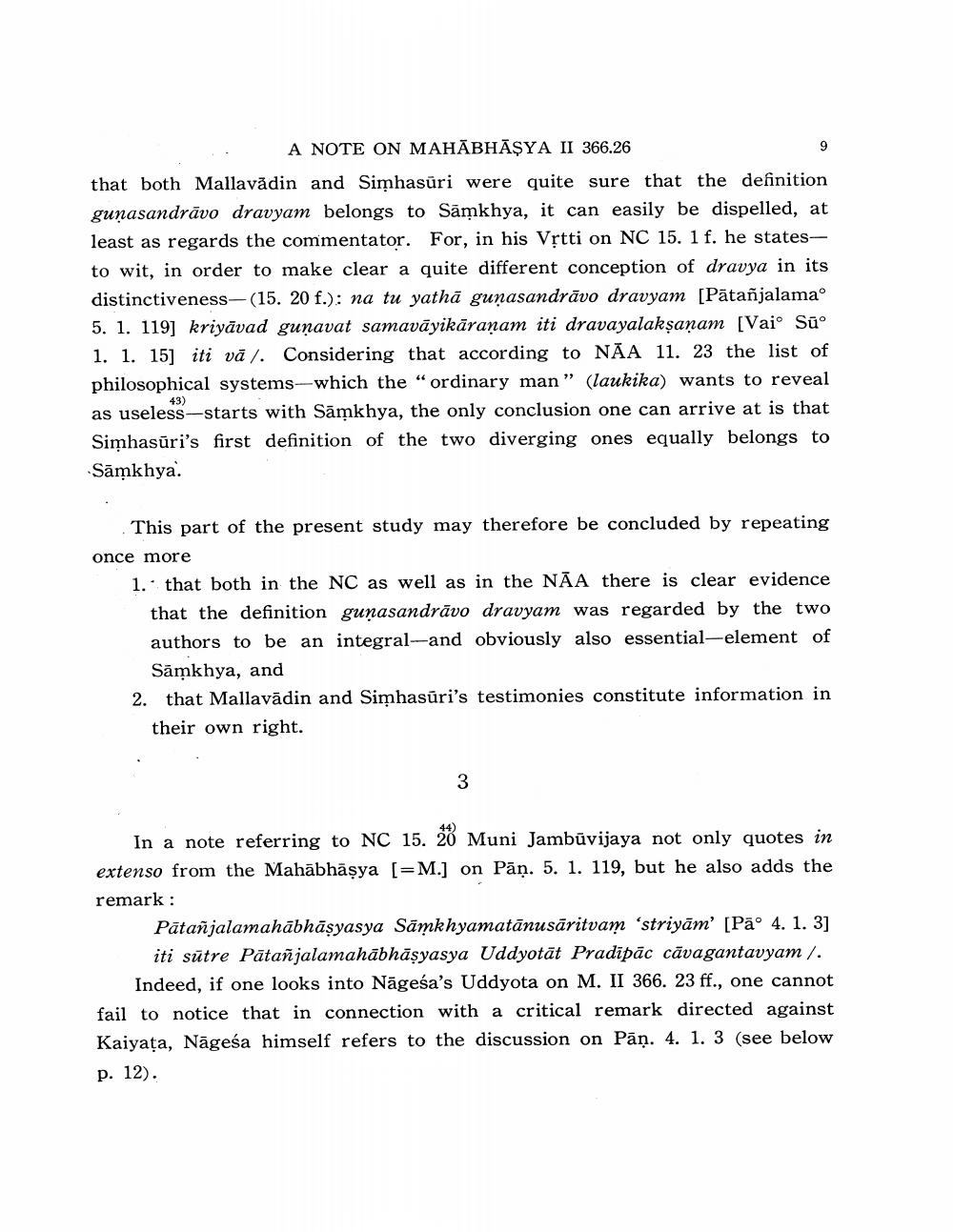Book Title: Note On Mahabhasya II 366 26 Gunasamdravo Dravyam Author(s): A Wezler Publisher: A Wezler View full book textPage 9
________________ A NOTE ON MAHĀBHĀSYA II 366.26 that both Mallavădin and Simhasüri were quite sure that the definition gunasandrāvo dravyam belongs to Sāmkhya, it can easily be dispelled, at least as regards the commentator. For, in his Vștti on NC 15. 1 f. he statesto wit, in order to make clear a quite different conception of dravya in its distinctiveness-(15. 20 f.): na tu yathā gunasandrāvo dravyam [Pātañjalamao 5. 1. 119] kriyāvad gunavat samavāyikāraṇam iti dravayalaksanam [Vaio Sū° 1. 1. 15] iti vā /. Considering that according to NĀA 11. 23 the list of philosophical systems--which the “ordinary man" (laukika) wants to reveal as useless-starts with Sāmkhya, the only conclusion one can arrive at is that Simhasūri's first definition of the two diverging ones equally belongs to Sāmkhya This part of the present study may therefore be concluded by repeating once more 1. that both in the NC as well as in the NĀA there is clear evidence that the definition gunasandrāvo dravyam was regarded by the two authors to be an integral--and obviously also essential-element of Sāmkhya, and 2. that Mallavādin and Simhasūri's testimonies constitute information in their own right. In a note referring to NC 15. 20 Muni Jambūvijaya not only quotes in extenso from the Mahābhāşya (=M.] on Pāṇ. 5. 1. 119, but he also adds the remark: Pātañjalamahābhāsyasya Sāmkhyamatānusāritvam 'striyām' [Pā° 4. 1. 3] iti sūtre Pātañjalamahābhāşyasya Uddyotāt Pradīpāc cāvagantavyam/. Indeed, if one looks into Nāgeśa's Uddyota on M. II 366. 23 ff., one cannot fail to notice that in connection with a critical remark directed against Kaiyața, Nāgesa himself refers to the discussion on Pāņ. 4. 1. 3 (see below p. 12).Page Navigation
1 ... 7 8 9 10 11 12 13 14 15 16 17 18 19 20 21 22 23 24 25 26 27 28 29 30 31 32 33
